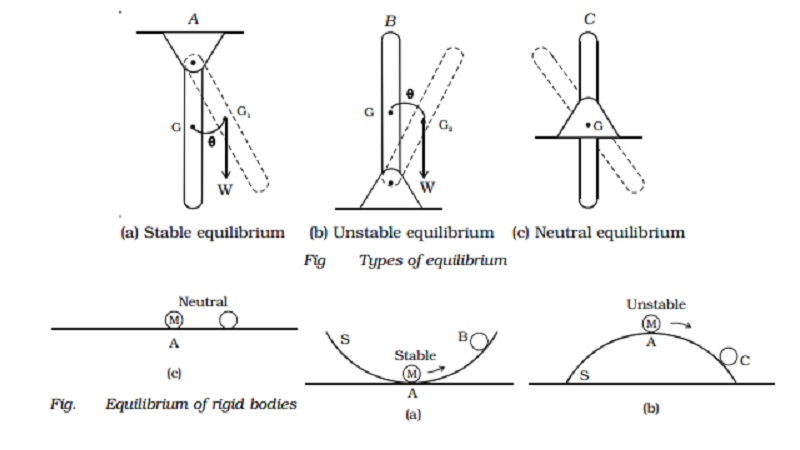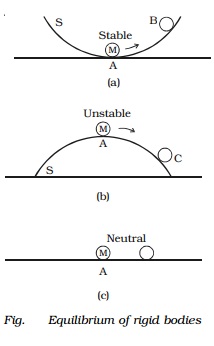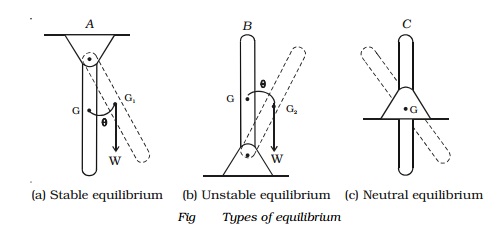Chapter: 11th 12th std standard Class Physics sciense Higher secondary school College Notes
Equilibrium of bodies and types of equilibrium

Equilibrium of bodies and types of equilibrium
If a marble M
is placed on a curved surface of a bowl S,
it rolls down and settles in equilibrium at the lowest point A (Fig. a). This
equilibrium position corresponds to minimum potential energy. If the marble is
disturbed and displaced to a point B,
its energy increases When it is released, the marble rolls back to A. Thus the marble at the position A is said to be in stable equilibrium.

Suppose now that the bowl S is inverted and the marble is placed
at its top point, at A (Fig. b). If
the marble is displaced slightly to the point C, its potential energy is lowered and tends to move further away
from the equilibrium position to one of lowest energy. Thus the marble is said
to be in unstable equilibrium.
Suppose now that the marble
is placed on a plane surface (Fig. c). If it is displaced slightly, its
potential energy does not change. Here the marble is said to be in neutral equilibrium.
Equilibrium is thus stable, unstable or neutral
according to whether the potential energy is minimum, maximum or constant.
We may also characterize the
stability of a mechanical system by noting that when the system is disturbed
from its position of equilibrium, the forces acting on the system may
(i)
tend to
bring back to its original position if potential energy is a minimum, corresponding to stable equilibrium.
(ii)
tend to
move it farther away if potential energy is maximum,
corresponding unstable equilibrium.
(iii)
tend to
move either way if potential energy is a constant
corresponding to neutral equilibrium
Consider three uniform bars shown in Fig. a,b,c. Suppose each bar
is slightly displaced from its position of equilibrium and then released. For
bar A, fixed at its top end, its
centre of gravity G rises to G1 on being displaced, then
the bar returns back to its original position on being released, so that the
equilibrium is stable.

For bar B,
whose fixed end is at its bottom, its centre of gravity G is lowered to G2
on being displaced, then the bar B
will keep moving away from its original position on being released, and the
equilibrium is said to be unstable.
For bar C, whose fixed point is about its centre of gravity, the
centre of gravity remains at the same height on being displaced, the bar will
remain in its new position, on being released, and the equilibrium is said to
be neutral.
Related Topics